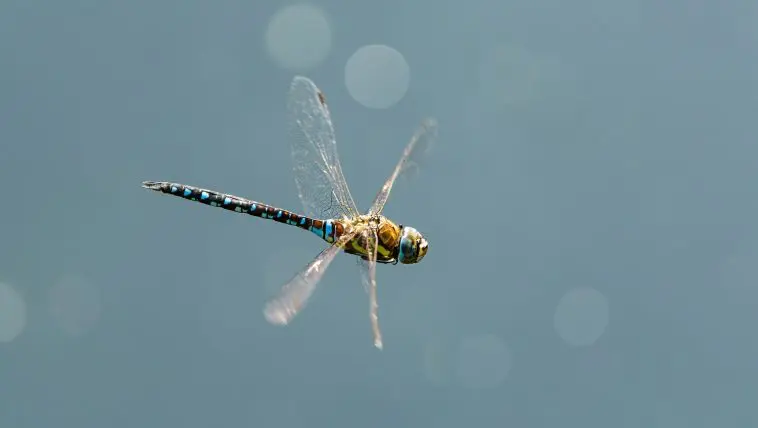[Originally reported on Thank God for Insects]
Editor’s comments: Over and over, researchers are discovering nanostructures in insects that allow them to survive and thrive in their habitats. No one on earth believes these tiny organisms are smart enough to decide to add these microscopic additions to their bodies—it’s taken us this long to develop ways to even see them! Yet, many insist that blind, random chance was enough to not only produce things so useful but to encode the instructions for reproducing them from generation to generation.
How much better it is to honor the real genius behind these brilliantly effective designs.
To God be the glory!
Clearer than Glass
“Sections of the wings of a longtail glasswing butterfly are almost perfectly transparent. Three years ago, Caltech postdoctoral researcher Radwanul Hasan Siddique — at the time working on a dissertation involving a glasswing species at Karlsruhe Institute of Technology in Germany — discovered the reason why: the see-through sections of the wings are coated in tiny pillars, each about 100 nanometers in diameter and spaced about 150 nanometers apart. The size of these pillars — 50 to 100 times smaller than the width of a human hair — gives them unusual optical properties. The pillars redirect the light that strikes the wings so that the rays pass through regardless of the original angle at which they hit the wings. As a result, there is almost no reflection of the light from the wing’s surface.” ~Science Daily.com
Medical researchers quickly saw that mimicking this structure can allow an implant designed to help measure eye pressure in glaucoma patients to give an accurate reading without having to be held at exactly the right angle. This makes it possible to check for pressure spikes even at home.
Unsurpassed High Jumping
“The model has major implications for engineers. It suggests that robots can’t yet outjump a flea in part because such quick, repeatable movements require components to be exquisitely fine-tuned to each other.” ~Duke.edu
We’ve all watched a bug leap its way out of danger. It’s easy to take their skill for granted. But robotics manufacturers sure aren’t! Watch this:
“The secret to these organisms’ explosive movements isn’t powerful muscles, but rather spring-loaded parts they can cock and release like an archer’s bow, said Sheila Patek, associate professor of biology at Duke University.
“Tough yet flexible tendons, cuticles and other elastic structures stretch and release like slingshots, powering their jumps and snaps.
“A short-legged insect called the froghopper, for example, has a bow-like structure called the pleural arch that acts like a spring. Latch-like protrusions on their legs control its release, allowing them to leap more than 100 times their body length despite their short legs. A person with that much power could jump nearly two football fields.”
Now that took careful thought and planning on the part of these small creatures’ Designer, God.
Quick-Dry, Lightweight Structural Material From a Dragonfly’s Wings
Inexpensive, strong, and fast materials. That sounds like something a generous and loving Creator would plan into his world. I’m sure he will be delighted to see what we do with his unpatented process.
“The material, known as an aerogel, is the most porous material known to man and ultralight, with a piece the size of a family car weighing less than a kilogram.
A dragonfly’s wings are an ultralight aerogel — making up less than 2% of the insect’s total body weight — and yet they are so strong they can carry the insect thousands of miles across oceans and between continents, says Dr Šiller..
“When the dragonfly emerges from its larval skin, its wings are like jelly but within a very short time they expand and harden to become completely dry.
“To achieve this, their bodies produce bicarbonate molecules which release carbon dioxide gas that regulates body pressure and dries wings at the same time. This ‘blows’ out the water to leave a dry, stable, light and strong structure.
We replicated this process in the lab with the aerogel, blowing out the water at ambient temperature and with sodium bicarbonate. ~Science Daily.com
Multisensory Medical Cameras
How do you spot one set of cells when they used to be just like all the rest around them? That’s the challenge facing cancer doctors. Swiping a design straight from a butterfly’s eye can save years of expensive research and development. And God only asks for praise and gratitude in return!
“By mimicking the intricate visual system of a butterfly, researchers have created a camera that provides surgeons with both a traditional color image as well as a near-infrared image that makes fluorescently labeled cancerous cells visible even under bright surgical lighting. The new camera is designed to help surgeons remove all the cancerous cells without damaging healthy tissue, making it less likely that the cancer will spread and reducing the need for multiple surgeries.”
Instead of putting together commercially available optics and sensors to build a camera for image-guided surgery, we looked to nature’s visual systems for inspiration. The morpho butterfly, whose eyes contain nanostructures that sense multispectral information, can acquire both near-infrared and color information simultaneously. ~Viktor Gruev from the University of Illinois at Urbana-Champaign Science Daily.com







